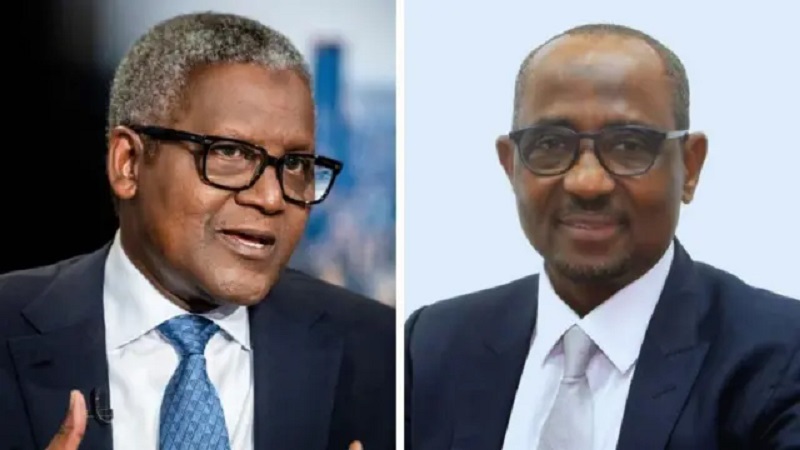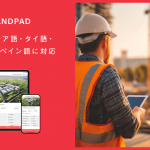Feature/OPED
SMEs: Attracting Quality Foreign Direct Investments

By Timi Olubiyi, PhD
In the Nigerian context, a foreign direct investor is an individual or entity resident abroad that has acquired, either directly or indirectly, at least 10 per cent of the voting power of an enterprise resident in Nigeria.
The direct investor could be any of the following in real terms: an individual, a group of related individuals, an incorporated or unincorporated enterprise, a public or private enterprise, a group of related enterprises, or any of the mentioned combinations.
Foreign Direct Investment (FDI), on its part, is an investment from a party abroad into a business or enterprise in Nigeria to establish a lasting interest. Simply put, FDI is when a company or individual abroad has lasting investment interest, which is obtained by at least 10 per cent of the voting power in a business in Nigeria.
The lasting interest of the investor differentiates FDI from other forms of foreign investment including foreign portfolio investments, where investors passively hold securities in Nigeria from a foreign country.
A greater number of countries strive to attract FDIs because of its acknowledged benefit as an instrument of economic development.
Historically, Nigeria is one of the countries in Africa with vast demand for goods and services in form of FDIs, sitting in the third place behind Egypt and Ethiopia, according to the United Nations Conference on Trade and Development (UNCTAD) 2019 World Investment Report.
However, Nigeria has been able to attract some appreciable FDIs over the years. To a greater extent, one of the federal government measures to motivate FDIs is noticeable in the Ease of Doing Business Policy. The policy has been beneficial to SMEs largely and it has helped in driving the inflow of FDIs into the country.
The Central Bank of Nigeria provides FDIs in US Dollars and from the data gathered, it has increased from less than $1billion in 1990 to $1.2billion in 2000, $4.5 billion in 2006 and as of 2019, the FDI inflow into Nigeria was $3.3 billion. The contribution of FDIs to SMEs in Nigeria is significant and it keeps increasing year on year.
Therefore, for SME operators to attract international investors, it will require effort, time, and a lot of confidence.
Nevertheless, it can be an important avenue for the development and expansion of business operations and also stimulate dependable joint ventures, private equities, mergers, and acquisitions.
Some of the main investing countries in Nigeria include the USA, China, the United Kingdom, the Netherlands, and France among others
FDIs can either be conducted horizontally or vertically in terms of strategy. With the horizontal approach, a business expands its domestic operations to a foreign country; that is, the business conducts the same activities but in a foreign country.
For a good understanding of horizontal FDI, a typical example is the involvement of Shoprite outlets in Nigeria.
Whereas, the vertical FDI involves the expansion of businesses into a foreign country by moving to a different level of the supply chain. In other words, a firm conducts different activities abroad but these activities are still related to the main business. Using the same example, Shoprite building and managing malls and other real estate products.
Horizontal investment is the most common and occurs when a company (investee) merges with another company (investor) that offers the same products or services from a different country to become stronger in that market.
This article is looking at the inward-flow of FDIs which refers to investments received by local businesses from foreign entities or individuals.
An example of such is any investment made in Nigeria by different foreign individuals or entities from abroad. There is a large body of knowledge on the benefits local businesses can derive from FDIs, some of which are profitability stimulation, development of human capital more boosts in employment opportunities and job creation, enhanced competitiveness, access to management expertise, improved employee skills, transfer of technology, knowledge transfer, and above all it will contribute to business expansion and profitability.
More importantly, an increase in FDI inflows to a business creates more positive economic effects. FDI offers an important source of capital and it can complement domestic investments of the local businesses.
Additionally, FDIs offer advantages and benefits to foreign investors as well, such as market diversification, boosting competitiveness, tax incentives, lower labour costs, taking advantage of large market size, preferential tariffs, and high demand for goods and services due to the population of Nigeria.
Furthermore, since FDI sometimes flows through trade partners, mergers and acquisitions, and joint ventures, this can bring better managerial and organisational skills into local SMEs.
Nonetheless, attracting international investors to your business can be a daunting task anyway, though if you create time and effort, it will reap the desired gains.
Attracting foreign investment can be simple if your company does it the right way. However, the most important parts of attracting international investors are a strong business model, good business structure and culture, impressive infrastructure quality, huge market size, return on investment, and innovation. These are some of the factors that usually attract foreign investment to a local business.
SME operators should consider the following guidelines and advice to attract FDIs into their prospective businesses: Compile significant data that shows the business’s success and trend in your current financials.
Projections on how you plan to continue that success with adequate supportive data should be gathered. Documentation of how your business will work under the proposed new arrangement and the commercial viability should be prepared. As an experienced SME operator, consider having a list of potential pitfalls and how you plan to navigate them for the investor to understand the inherent business risk and their mitigants.
As an SME operator, you should also be able to show what an investor could gain investing in your business, which is the return on investment. Having detailed information about how investing in your business is beneficial to the investors should similarly be gathered. If possible, prepare an information memorandum. FDIs will expect you to know everything about your business and how it will function with additional shareholders or equities, so work on this.
You should also educate yourself on the cultural and business norms of the countries of your prospective investors, as ignorance or miscommunication can be tragic for a business relationship.
The big question is can the investor easily take profits out of the country and repatriate, or are there local restrictions? All government regulations, policies, and approval needed should be compiled and make sure you have all the process detailed and you can provide an accurate timeline for getting documentation sorted.
Above all, adopt aggressive investment promotion on social media and use international networking events and agents to search for investors and build up interest. Make sure all needed information on your business is full and concise for review by your prospective investors.
With these aforementioned tips, your business can find an effective foreign investor to help your business grow.
However, if you have specific concerns about enhancing or on how to build an effective strategy to attract FDIs to your business, you may need to urgently reach out to a professional for essential advice. Good luck!
How may you obtain advice or further information on the article?
Dr Timi Olubiyi is an Entrepreneurship and Small Business Management expert with a Ph.D. in Business Administration. He is a prolific investment coach, business engineer, Chartered Member of the Chartered Institute for Securities & Investment (CISI), and a financial literacy specialist. He can be reached on the twitter handle @drtimiolubiyi and via email: [email protected], for any questions, reactions, and comments.
Feature/OPED
Dangote and Farouk: The Distance Between Capital and Conscience

By Abiodun Alade
Within the space of 48 hours, Aliko Dangote offered Nigeria a rare demonstration of what leadership looks like when power is exercised with responsibility and consequence.
First came the announcement of a N100 billion annual education support programme — a decade-long N1 trillion commitment projected to keep more than 1.3 million Nigerian children in school. Its architecture was intentional, not ornamental: girls’ education, STEM disciplines, technical skills, and those children most likely to disappear quietly into the margins of poverty were placed at the centre, not the footnotes.
Then, almost immediately, his refinery reduced the price of Premium Motor Spirit by over N100 per litre. This was not achieved through government fiat, subsidy or public funds, but through internal cost absorption, aimed at easing the pressure of inflation on households, transport operators and small businesses already stretched thin.
Two decisive interventions. One individual. Forty-eight hours.
In a country where scarcity has been normalised and excuses institutionalised; these actions stand out precisely because they are uncommon. Nigeria does not lack wealth. It lacks the nerve to use it responsibly.
Dangote’s interventions were not symbolic gestures designed for applause. They were structural acts. Education secures the future. Affordable energy steadies the present. Together, they form the foundation of any serious development strategy.
Now set this against the performance of Nigeria’s downstream petroleum regulation.
Engr Farouk Ahmed, Chief Executive of the Nigerian Midstream and Downstream Petroleum Regulatory Authority (NMDPRA), presides over a sector whose policy objectives are clearly stated: support domestic refining, reduce imports, conserve foreign exchange and strengthen energy security. These goals are enshrined in the Petroleum Industry Act and reinforced by the Federal Government’s Nigeria First policy.
Yet in practice, the downstream market remains crowded with import licences, uneven enforcement and regulatory decisions that continue to weaken local refining. Even with Africa’s largest refinery operating on Nigerian soil, import dependence persists — not because capacity is lacking, but because incentives remain misaligned.
This is where comparison ends.
Dangote and Farouk Ahmed do not operate on the same economic or moral plane. One commits private capital to solve national problems. The other leads a public institution whose outcomes are increasingly questioned by industry players, economists and the public alike.
One expands supply.
The other presides over a system where scarcity recurs.
One cuts prices.
The other manages a framework in which price instability has become familiar.
One reinvests personal wealth into Nigerian children.
The other reportedly expends questionable millions of dollars on secondary education abroad, while in his home state, Sokoto, thousands of children drop out of school over tuition fees as low as N10,000.
Only in Nigeria does the arithmetic of public life so often defy reason. Where official incomes are modest, lifestyles sometimes appear imperial. Where the books are thin, the living is lavish. And where questions should naturally arise, silence frequently answers instead.
It is a country where some who labour in the open marketplace live with studied moderation, while others, known only to the payroll of the state, move with a splendour their salaries cannot reasonably sustain. Children are educated across distant borders, fees quoted in foreign currencies that mock the modest figures attached to public service, yet accountability remains elusive.
When regulators falter, it is rarely for lack of laws or mandates. More often, authority is softened by comfort, dulled by compromise, and entangled in interests it was meant to police. A regulator burdened by unanswered questions cannot stand upright; oversight weakens when conscience is clouded.
In such moments, one does not need a forensic accountant to sense disorder. A soothsayer is hardly required to see where lines have blurred, where vigilance has yielded to indulgence, and where public trust has quietly been mortgaged.
This is how institutions lose their moral centre — not always through spectacular scandal, but through a series of small indulgences that mature, unnoticed, into systemic decay.
The fuel price reduction alone deserves careful attention. In Nigeria, petrol is not merely a commodity; it is the bloodstream of the economy. When prices rise, transport fares rise. Food prices rise. School attendance drops. Small businesses shut early. Families cancel travel or risk storing petrol in jerry cans — turning highways into mobile fire hazards during festive seasons.
By reducing PMS prices by over N100 per litre, the Dangote Refinery accomplished what years of policy meetings failed to deliver. It restored breathing space. It returned dignity to commuters. It reduced pressure on traders. It saved millions of productive man-hours otherwise lost to queues, panic buying and logistical paralysis.
That this occurred alongside a historic education commitment is not accidental. It reflects an understanding that energy without education builds nothing, and education without economic stability cannot thrive.
Meanwhile, regulatory bottlenecks remain. Local refiners cite delays in approvals, vessel clearances and inconsistent enforcement. Importers continue to flourish. Arbitrage adapts. Rent-seeking survives. The system continues to reward trading over production.
This is not accidental. Systems behave exactly as they are designed to behave.
Nigeria does not suffer from a shortage of ideas. It suffers from a shortage of alignment. When private citizens act more decisively in the national interest than institutions legally mandated to do so, something fundamental is broken.
No country industrialises by frustrating its producers. No economy grows by privileging imports over domestic value creation. No regulator earns legitimacy by operating in tension with stated national objectives.
Dangote’s actions within 48 hours expose an uncomfortable truth: Nigeria’s most binding constraint is no longer capital, technology or scale. It is governance culture.
Leadership is revealed not by speeches, but by choices. In two days, one Nigerian chose to educate the future and ease the present. Others continue to curate systems that profit from delay, opacity and dependence.
History is rarely neutral.
It remembers who built.
And it remembers who stood in the way.
Abiodun, a communications specialist, writes from Lagos
Feature/OPED
Preventing Financial Crimes Amid Mounting Insecurity: Why Following the Money is Now a Survival Imperative

By Blaise Udunze
Nigeria today faces a sobering dual reality: a deepening security crisis and an entrenched financial-crime ecosystem that quietly feeds, sustains, and normalises that crisis. Across the North, Middle Belt, and parts of the South, kidnappers, bandits, insurgent cells, political actors, compromised security agents, and a complex chain of financial facilitators operate within a shadow economy of violence, one that generates billions, claims thousands of lives, and steadily erodes the authority of the state.
For over a decade, security experts and Nigeria’s international partners have warned that no meaningful progress will be made against insecurity unless the financial oxygen sustaining violence is cut off. Yet the country continues to prosecute its anti-terrorism efforts largely through military responses, as though the conflict could be resolved solely on the battlefield. What remains missing is a decisive, transparent, and politically courageous confrontation with the economic networks that make insecurity profitable.
This war is not only about guns and bullets. It is about money.
Money moves fighters.
Money buys weapons.
Money fuels political desperation.
Money underwrites chaos.
Until Nigeria addresses the financial pipelines behind its insecurity, the crisis will continue to reproduce itself.
Kidnapping: The Lucrative ‘War Fund’ Sustaining Insurgency
The rise in mass kidnappings is neither accidental nor spontaneous. It has evolved into a rational, structured, revenue-generating enterprise.
Appearing on Channels TV’s Politics Today in October 2025, Yusuf Datti Baba-Ahmed warned that insurgent and bandit groups now treat ransom payments as reliable “war funds.” The data support his claim.
A 2024 survey by the National Bureau of Statistics (NBS) found that Nigerians paid N2.2 trillion in ransom between May 2023 and April 2024. This astonishing sum does not account for unreported payments made through informal negotiators, mobile transfers, or unregulated community channels.
Kidnapping has matured into a fully formed economy with well-defined roles: negotiators, informants, logistics providers, cash couriers, and security collaborators. Proceeds are reinvested in weapons, motorcycles, communication devices, safe houses, and even land acquisitions.
In the words of a security analyst, “Every successful kidnapping is a fundraiser.”
Sabotage from Within: Keffi’s Explosive Memo and a System Built to Fail
If Nigeria’s external security threats are troubling, the internal compromises are even more alarming.
A leaked memo by Major General Mohammed Ali Keffi accused senior government and military officials of diverting billions of naira earmarked for arms procurement under former Chief of Army Staff, Lt. Gen. Tukur Buratai. Keffi’s allegations included:
– Weapons paid for but never delivered
– Falsified battlefield reports
– Civilian casualties mislabelled to justify inflated expenditures
– Political interference obstructing investigations into terror financing
His claims echoed the earlier warning by Gen. T.Y. Danjuma, who accused sections of the military of working in concert with armed groups and abandoning vulnerable communities.
Keffi’s memo became even more consequential following the 2025 detention of former Attorney General Abubakar Malami by the EFCC over allegations of money laundering, terrorism financing and suspicious financial activity linked to 46 bank accounts.
Together, these revelations paint a disturbing picture: even as Nigerians endure mass abductions, elements within the political and security elite appear to be enabling or shielding the financial networks behind the violence.
Why the Crisis Persists: A Financial Crime Lens
Nigeria’s insecurity cannot be divorced from the environment in which illicit finance thrives. Key enablers include:
- Informal Economies and Unregulated Cash Flows
With over 70 percent of rural transactions still cash-based, terror groups exploit:
– Hawala networks
– POS and mobile-money agents
– Cattle markets and mining sites
– Barter systems centred on livestock and grains
These channels operate beyond the reach of AML/CFT systems.
- Identity Fraud and Weak KYC Enforcement
– Criminal networks routinely open accounts with:
– Fake NINs
– Compromised SIM cards
– Recycled BVNs
– Mule identities
- Collusion within Financial Institutions
The EFCC estimates that up to 70 percent of financial crimes involve bank personnel, primarily through:
– Unauthorised cash withdrawals
– Suppressed Suspicious Transaction Reports (STRs)
– Manipulated internal alerts
- Weak Prosecution and Political Interference
Cases drag on for years, and many evaporate entirely before reaching court often due to political considerations.
- Ungoverned Spaces
Large territories across the North serve as hubs for:
– Arms trafficking
– Illegal mining
– Kidnap-for-ransom camps
– Cross-border smuggling
Public Patience Thins: NLC Moves to the Streets
Public frustration is reaching a boiling point. On December 10, the Nigeria Labour Congress (NLC) announced a nationwide protest scheduled for December 17, citing the “degenerating security situation” and the rise in mass abductions.
The NLC condemned the November 17 abduction of female students in Kebbi, noting that security personnel had been withdrawn from the school shortly before the attack. The union called the act “dastardly and criminal” and directed all affiliates and civil-society partners to fully mobilise for the protest.
This marks a significant shift. For the first time in years, Nigeria’s most influential labour body is placing insecurity at the centre of national mobilization, further underscoring the argument that the current crisis is not simply a security failure but a systemic breakdown of governance, accountability, and financial integrity.
The Financial Engine of Terror: The 23 Suspects Who Moved Billions
A Sahara Reporters investigation uncovered a network of 20 Nigerians and three foreign nationals allegedly linked to the financing of Boko Haram and ISWAP. Their transactions, running into hundreds of billions, were quietly channeled through personal and corporate accounts.
Among those named:
– Alhaji Saidu Ahmed, Zaria businessman: N4.8bn inflows
– Usaini Adamu, Kano trader with 111 accounts: N43bn inflows, N50bn outflows
– Muhammad Sani Adam, forex and precious stones dealer: N54bn across 41 accounts
– Yusuf Ghazali, a forex trader linked to UAE-convicted terrorists, operated 385 accounts
– Ladan Ibrahim, a Sokoto official, is accused of diverting public funds
– Foreign actors included the late Tribert Ayabatwa (N67bn inflows) and Nigerien arms dealer Aboubacar Hima, who moved over $1.19 million.
Strikingly, several of the suspects arrested in 2021 were quietly released without trial, continuing a pattern of impervious investigations and political bottlenecks.
This network confirms a painful truth: Nigeria’s insecurity is not driven solely by men wielding rifles in the bush. It is sustained by individuals in cities, businesses, and bureaucracies, people with access, influence, and remarkable financial mobility.
The Political Dimension: Irabor’s Revelation and the Unnamed Sponsors
The political undertone of Nigeria’s insecurity was reinforced by the former Chief of Defence Staff, Gen. Lucky Irabor (rtd), who admitted that politicians were among those financing terror groups. According to him, some trials were conducted “away from public consumption.”
His statement revived key questions:
– Why is the state shielding the identities of terror sponsors?
– Who benefits from the secrecy?
– What political consequences are being avoided?
Security sources told TruthNigeria that Nigeria’s published list of 19 terror financiers in 2024 represented only a fraction of the full network.
Baba-Ahmed’s accusation that former Kaduna Governor Nasir El-Rufai was part of the political forces that aggravated Northern insecurity, an accusation the former governor has previously denied, adds further urgency to demands for transparency.
The Human Cost: Expanding Killing Fields
Despite repeated assurances, violence continues to spread:
– 303 students and 12 teachers abducted in Niger State
– 38 worshippers kidnapped in Kwara
– Simultaneous raids across Plateau, Kaduna, Benue, and Niger
– Whole communities uprooted by weekly attacks
As Amnesty International observed, “In many rural communities, only the graveyards are expanding.”
SBM Intelligence now describes large portions of the North as “open killing fields,” areas where the state’s influence has collapsed, and community vigilantes have become the default security providers.
Expert Voices: Why Nigeria Must Finally Follow the Money
Security experts converge on a single message: Nigeria cannot defeat terrorism without dismantling its financial infrastructure. Dr. Friday Agbo, a security researcher, disclosed, “Terror groups survive because their financial lifelines remain untouched.”
Jonathan Asake, analyst and former SOKAPU president, said, “Publish the full Dubai list. Without transparency, impunity will remain the norm.”
Gen. Irabor (rtd.) revealed, “There are politicians involved. The conflict is multi-layered: ideology, criminality, and political manipulation.”
These assessments underscore one reality: ideology is secondary. Money is primary. It is the oxygen of Nigeria’s terror landscape.
What Must Change
Nigeria must elevate financial crime to the level of a national-security emergency. Key reforms include:
– Integrating BVN-NIN-SIM identity databases and upgrading real-time monitoring
– Targeting illicit markets: illegal mining hubs, cattle markets, unregulated border posts
– Deploying AI-driven analytics to detect layered transactions, mule networks, and ransom flows
– Strengthening bank compliance units and protecting whistleblowers
– Improving inter-agency intelligence sharing (EFCC, NFIU, DSS, NDLEA, Police, CBN)
– Criminalising unexplained wealth, especially in conflict zones
– Investing in safe-school infrastructure, rural policing, and local reporting channels
Choosing Truth Over Convenience
Nigeria’s two-front war is neither mysterious nor new. It is a well-documented, financially engineered crisis protected by silence, vested interests, and institutional decay. The NLC’s mobilisation signals a turning point; citizens are unwilling to accept official evasions while insecurity intensifies. To end this crisis, Nigeria must:
– Expose and prosecute terror financiers
– Purge corrupt insiders in the security system
– Dismantle ransom economies
– Strengthen financial intelligence
– End political protection for criminal networks
Until these reforms are pursued with integrity, billions will continue to move, weapons will continue to flow, and Nigeria will continue to bleed.
Blaise, a journalist and PR professional, writes from Lagos, can be reached via: [email protected]
Feature/OPED
Championing Ethical Sourcing Within Dairy Communities

Human Rights Day often centres on themes of dignity, equity, and freedom. Yet for many Nigerians, these rights are not debated in courtrooms they are expressed in the ability to access nutritious food, build meaningful livelihoods, and secure a healthy future for their families. Nutrition, in this sense, becomes a fundamental human right.
Despite a growing population and rising nutrition needs, Nigeria faces a pressing dairy reality. The country remains heavily dependent on dairy imports, leaving nutritional access vulnerable and local capacity underdeveloped. This is not just an economic concern; it is a human one. When families cannot easily access affordable, high-quality dairy, the foundations of health and development are weakened.
It is within this context that Arla Nigeria operates not merely as a dairy company, but as a nutrition powerhouse committed to nourishing a nation. Our ambition extends beyond selling products. We are working to build the foundations of a stronger, more resilient local dairy sector that supports food security, economic participation, and national progress.
At the heart of our efforts is the Damau Integrated Dairy Farm in Kaduna Statea fully operational modern farm designed to demonstrate what responsible, efficient, and scalable dairy production can look like in Nigeria. Arla Nigeria produces its own milk on-site, ensuring quality, safety, and consistency as we continue building the systems required for a sustainable local value chain. In fact, until our yoghurt factory launches, the reverse is true: some stakeholders purchase milk from us.
But infrastructure alone is not the story. What truly matters is the human impact surrounding the farm.
Arla Nigeria has been intentional about engaging and empowering the communities around Damau. By creating employment opportunities for local residents, providing skills development, and contributing to community growth, we are ensuring that the benefits of dairy development extend beyond production lines. This is development rooted in people where progress is measured in livelihoods improved and opportunities created.
As Arla Nigeria continues to expand operations, our long-term commitment remains clear: to contribute meaningfully to local milk sourcing and value chain development, strengthening Nigeria’s capacity to feed itself. Backward integration is not a slogan for Arla Foods; it is a structured pathway with building responsibly and sustainably. From farm systems to future household milk initiatives, the goal is to create a model that supports farmers, enhances productivity, and drives economic inclusion in the years ahead.
On Human Rights Day, the conversation often revolves around preventing harm avoiding exploitation, ensuring fair labour, and upholding ethical standards. These are essential, but they are only the beginning. True respect for human rights means creating enabling systems that allow people to thrive.
With Arla Foods, that begins with nutrition. Milk is a super food, rich in essential nutrients that support growth and development. Ensuring access to such nutrition contributes directly to national well-being and productivity. When we help secure a healthier population, we strengthen the foundation for education, economic participation, and long-term prosperity.
This is why Arla believes that dairy is not just food it is nutrition, livelihood, and progress. By investing in sustainable production, community development, and future local sourcing capabilities, Arla Nigeria is contributing to food security and economic growth in a tangible, measurable way.
Ultimately, ethical business is not defined by corporate language or labels. It is defined by the stability, nourishment, and dignity it brings to people’s lives. As Nigeria celebrates Human Rights Day, let us recognise that the right to nutrition and the opportunity to build a better future are among the most powerful rights we can help protect.
-

 Feature/OPED6 years ago
Feature/OPED6 years agoDavos was Different this year
-
Travel/Tourism9 years ago
Lagos Seals Western Lodge Hotel In Ikorodu
-

 Showbiz3 years ago
Showbiz3 years agoEstranged Lover Releases Videos of Empress Njamah Bathing
-

 Banking7 years ago
Banking7 years agoSort Codes of GTBank Branches in Nigeria
-

 Economy3 years ago
Economy3 years agoSubsidy Removal: CNG at N130 Per Litre Cheaper Than Petrol—IPMAN
-

 Banking3 years ago
Banking3 years agoFirst Bank Announces Planned Downtime
-

 Banking3 years ago
Banking3 years agoSort Codes of UBA Branches in Nigeria
-

 Sports3 years ago
Sports3 years agoHighest Paid Nigerian Footballer – How Much Do Nigerian Footballers Earn























